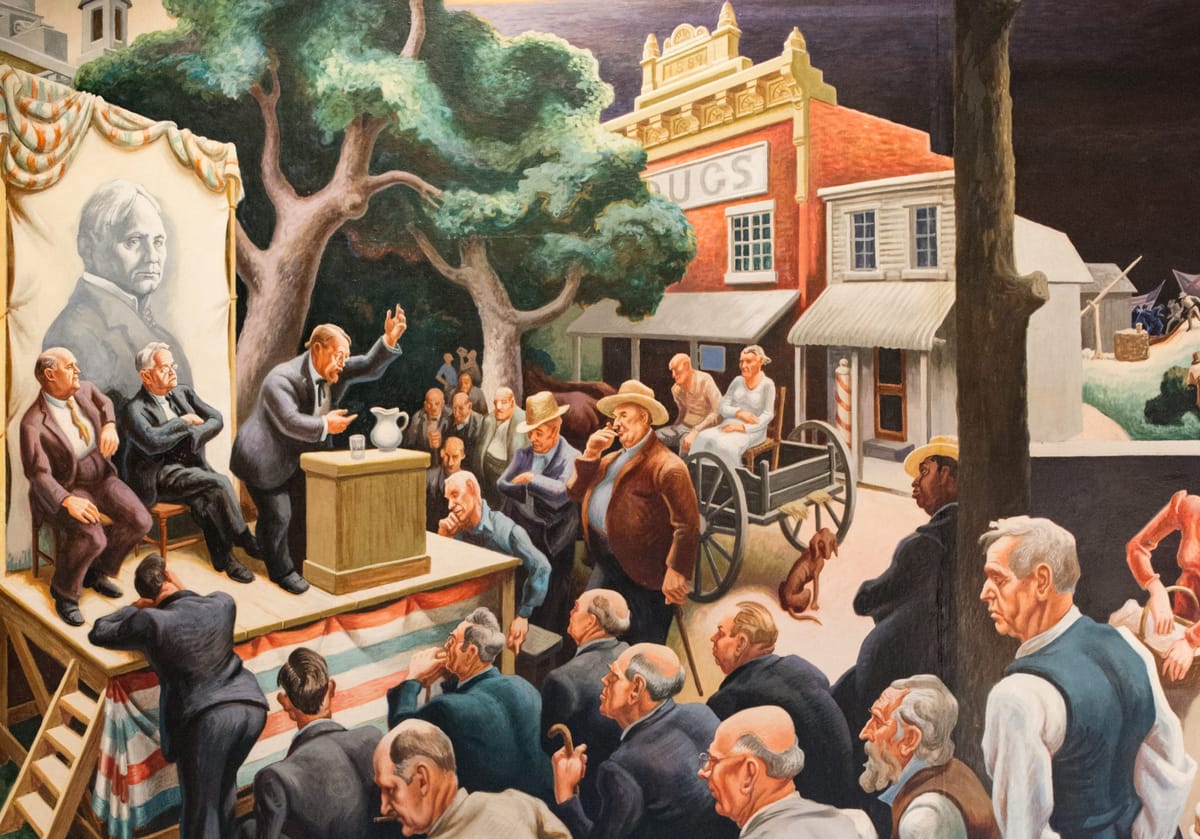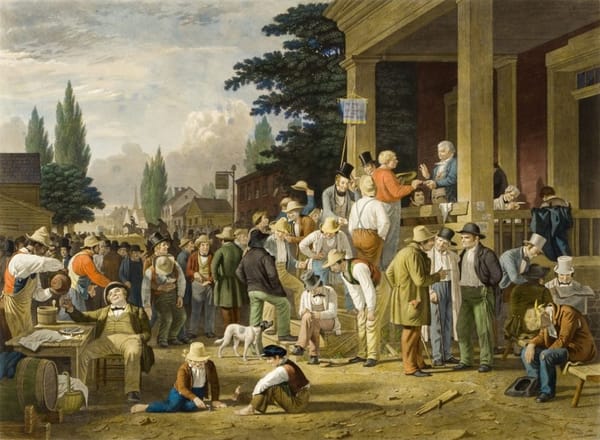Freedom’s Tempo: Asymmetric Polarization and the Rhythm of Democratic Life
Empirical models reveal polarization’s asymmetry: moral initiative has outpaced reflection. When progress accelerates faster than persuasion, civic harmony frays. Phronesis—practical wisdom—remains the ballast that keeps freedom steady amid democracy’s shifting tempo.

In 2020, two physicists from ETH Zurich—Lucas Böttcher and Hans Gersbach—set out to quantify with a mathematical framework what most Americans already felt in their bones: the nation’s public life had split apart - but one side was fueling this. Using a Bayesian Markov chain Monte-Carlo (MCMC) technique grounded in information theory, they analyzed decades of Pew Research Center data (1994–2017) on ideological alignment among Republican- and Democratic-leaning voters. Their conclusion was striking. Polarization, they found, had not been a symmetric drift toward extremity. It had an arrow, a direction, and a force: "strong initiatives in the Democratic party have been the main drivers of the great divide that emerged in recent decades between the Democratic- and Republican-leaning population."(Böttcher & Gersbach, Drivers of Polarization in the U.S. Public, 2020).
While empirical studies have their limits—as we discuss later—one finding in particular deserves attention. That finding cuts against the lazy symmetry that dominates public discourse. The instinct to assign equal blame. Yet if the data are to be believed, polarization is not a mirror of mutual radicalization. It is an asymmetric phenomenon: initiative and acceleration have come disproportionately from one side.
Yet if the data are to be believed, polarization is not a mirror of mutual radicalization. It is an asymmetric phenomenon: initiative and acceleration have come disproportionately from one side.
This does not imply moral superiority or inferiority, nor that progressivism is “wrong” in substance. The point, rather, is dynamical. When policy innovation outpaces deliberation—when moral and cultural revolutions advance faster than civic consent—institutions fray, and citizens retreat into epistemic camps. Progress becomes centrifugal.
The point, rather, is dynamical. When policy innovation outpaces deliberation—when moral and cultural revolutions advance faster than civic consent—institutions fray, and citizens retreat into epistemic camps. Progress becomes centrifugal.
Böttcher and Gersbach used information entropy, a measure of uncertainty in distributions, to model how the ideological “spread” of each political bloc evolved over time. From 1994 to 2017, they observed a consistent widening of the Democratic distribution toward the left, coupled with a milder and largely reactive shift of the Republican base. In simple terms, Democrats innovated; Republicans responded. Their analysis distinguished between two sources of polarization: ideological innovation—the introduction of new moral, cultural, or policy positions—and alignment response—how the opposing side consolidates or counter-mobilizes in reaction. In this dynamic, innovation plays the role of the accelerator; alignment, the brake. When the rate of innovation exceeds society’s capacity to absorb it through debate, civic mediation, or institutional adaptation, friction increases. And yet, paradoxically, that very friction is essential to freedom.
[...] paradoxically, that very friction is essential to freedom.
Still, the model has limits. By reducing political life to a one-dimensional left–right axis, it simplifies the complex interplay of cultural, economic, and institutional forces that shape polarization. Its conclusion—that Democratic initiatives drove the divide—rests on elegant but restrictive assumptions about how ideological change diffuses through society. The framework captures correlation more than causation; it cannot fully weigh the roles of media ecosystems, elite incentives, or social-network effects. Yet even within those constraints, the study illuminates a crucial dynamic: when innovation becomes unilateral and untempered by dialogue, it can destabilize the equilibrium on which democracy depends.
Yet even within those constraints, the study illuminates a crucial dynamic: when innovation becomes unilateral and untempered by dialogue, it can destabilize the equilibrium on which democracy depends.
The philosopher Raymond Aron often cautioned that political choice is never between good and evil, but between the preferable and the detestable. Democracy’s moral genius lies in its humility: it knows that truth must be approached through contestation, not decree. In this sense, unilateral moral initiative—the act of declaring progress without the slow work of persuasion—short-circuits that process. In the Böttcher-Gersbach model, the sharp leftward shift in Democratic self-identification reflected precisely this phenomenon. From climate policy to gender, race, and identity, the past two decades have seen an unprecedented expansion of moral vocabulary and legislative ambition. These changes were not merely tactical; they redefined social meaning itself.
But moral innovation, unlike technological innovation, depends on consent. Laws can compel behavior, but only persuasion can reshape souls. When one faction claims ownership of “the future,” the other naturally clings to “the past.” The political system then ceases to deliberate and begins to oscillate—its energy consumed in reaction rather than resolution.
But moral innovation, unlike technological innovation, depends on consent. Laws can compel behavior, but only persuasion can reshape souls. When one faction claims ownership of “the future,” the other naturally clings to “the past.” The political system then ceases to deliberate and begins to oscillate—its energy consumed in reaction rather than resolution.
The question, then, is not just whether progress is desirable, but at what tempo a free society can absorb or reject it. Political philosophers from Tocqueville to Berlin have warned that the rhythm of democratic life must remain conversational, not revelatory. Isaiah Berlin called this the “tragic pluralism of values”: the recognition that liberty entails friction among legitimate goods. “Freedom for the wolves has often meant death for the sheep,” he observed, yet the inverse is no less dangerous. When the wolves are wholly tamed—when society abolishes every disruptive or dissenting impulse in the name of safety or harmony—public life loses its vitality. A democracy that cannot tolerate its own troublemakers becomes pastoral rather than free: peaceful, managed, and spiritually inert.
In our time, the “wolves” are not literal aggressors but those whose convictions or speech fall outside approved moral boundaries—writers, scientists, citizens who resist prevailing orthodoxies. Their suppression does not protect liberty; it anesthetizes it. The task of democracy is to civilize conflict, not erase it—to give wolves and sheep a common field rather than a cage.
In this sense, the ETH study exposes a problem deeper than partisanship. The real divide is not simply between Democrats and Republicans, but between two moral traditions—one procedural, the other prophetic. The first conceives progress as something to be negotiated: a gradual, uncertain unfolding of moral insight through persuasion, compromise, and institutional restraint. It belongs to what Isaiah Berlin called the fox’s wisdom—alert to plurality, wary of final answers, aware that human goods are many and often in tension (The Hedgehog and the Fox, 1953). The second tradition treats progress as preordained: a moral revelation that must be enacted, not debated, because its truth is self-evident and its justice urgent. It speaks with the voice of the hedgehog, who “knows one big thing” and pursues it with unbending conviction.
[...] the ETH study exposes a problem deeper than partisanship. The real divide is not simply between Democrats and Republicans, but between two moral traditions—one procedural, the other prophetic.
These two moral sensibilities—liberal pluralism and moral monism—now collide within the same democratic body. The ETH model’s asymmetry, showing initiative flowing largely from the left, mirrors the growing influence of the prophetic impulse: movements that see themselves not as participants in an ongoing conversation but as bearers of historical destiny. Their fervor can inspire reform, but it also threatens the deliberative balance on which democratic life depends. For if one side believes its moral vision to be destiny rather than argument, what remains to deliberate? The clash, then, is not only ideological but civilizational: between the fox’s freedom to navigate complexity and the hedgehog’s yearning for a single, redemptive truth.
The clash, then, is not only ideological but civilizational: between the fox’s freedom to navigate complexity and the hedgehog’s yearning for a single, redemptive truth.
Democracy’s ballast is not certainty but doubt. Its procedures—elections, courts, legislatures—are not designed to express absolute truth but to manage coexistence among partial truths. The moment a movement deems dissent obsolete, it ceases to be democratic, however noble its goals.
The asymmetry identified by Böttcher and Gersbach also interacts with powerful cultural feedbacks. Academia, media, and tech industries—concentrated in urban, educated, and Democratic-leaning milieus—amplify innovations born in those settings. Cultural capital becomes moral capital. The language of inclusion, for instance, swiftly migrates from university seminars to corporate HR manuals, then to legislation. Each iteration reinforces a moral hierarchy that leaves dissenters not merely unconvinced but morally condemned.
Meanwhile, conservative media ecosystems cultivate a counter-epistemology—reactive, oppositional, and conspiratorial. Thus, the more one side innovates in the moral domain, the more the other radicalizes in the defensive domain. Polarization becomes a self-propelling machine: innovation and resistance, acceleration and backlash, neither able to stop without fear of defeat.
Polarization becomes a self-propelling machine: innovation and resistance, acceleration and backlash, neither able to stop without fear of defeat.
It would be intellectually dishonest, however, to interpret the ETH findings as partisan vindication. Reactionary politics carries its own pathologies—nostalgia, paranoia, and apocalyptic moralism. But the asymmetry matters because it illuminates the structural roots of division. If progress is the accelerator, then prudence must be the steering wheel.
If progress is the accelerator, then prudence must be the steering wheel.
This is the forgotten virtue of democratic politics: phronesis, or practical wisdom. In the Nicomachean Ethics, Aristotle defined phronesis as the faculty that links moral insight to prudent action—the habit of discerning not only what is good, but what is fitting, and when. Unlike theoretical wisdom (sophia), which contemplates eternal truths, or technical skill (techne), which follows rules to produce a predetermined outcome, phronesis belongs to the messy, contingent realm of human action (praxis). It governs the middle ground between abstract ideal and concrete circumstance, reminding us that ethics without judgment becomes tyranny by another name. A politics of pure ideology mistakes the eternal for the possible; a politics of pure technocracy treats citizens as raw material to be engineered rather than as agents to be persuaded. Phronesis is the corrective to both. It is the distinctly political intelligence that understands that the right action depends on the particulars of the situation. A polity guided by phronesis translates moral aspiration into sustainable reform because it measures justice by what a diverse community can actually bear. Without it, politics degenerates into moral exhibitionism—virtue performed faster than virtue can be lived, reform launched before persuasion has taken root. What Aristotle called the “mean relative to us” becomes, in public life, the civic art of proportion: knowing how far and how fast to move without destroying the harmony that makes movement possible.
A polity guided by phronesis translates moral aspiration into sustainable reform because it measures justice by what a diverse community can actually bear. Without it, politics degenerates into moral exhibitionism—virtue performed faster than virtue can be lived, reform launched before persuasion has taken root.
Yet phronesis is more than deliberation; it is a way of seeing. As Martha Nussbaum reminds us, practical wisdom is not a calculus of rules but a cultivated perception—the art of discerning what truly matters in the irreducible complexity of life. Emotions, for her, are not the enemies of reason but its instruments: discriminating modes of perception that reveal the moral salience of particulars which abstraction cannot grasp. Phronesis thus lives in the interplay between the universal and the particular, in what Nussbaum calls a “loving conversation between principles and experience.” To deliberate well is to see well—to perceive the human face behind the moral formula. In democratic life, this means progress must remain perceptive and humane: responsive to lived realities, not only to ideals.
To restore civic cohesion, however, phronesis cannot be revived as an individual virtue alone; it must be re-embedded in a shared moral life. Alasdair MacIntyre diagnosed the core ailment of modernity as the loss of a common ethical language, leaving our public discourse in a state of “grave disorder” where moral claims function as expressions of emotional preference—what he called emotivism—rather than as appeals to shared reason. In After Virtue, MacIntyre called for reclaiming Aristotle’s conception of practical reason within the context of practices and living traditions. A tradition, for him, is not blind conservatism but a “historically extended, socially embodied argument” about the good life—the very medium within which phronesis can operate.
In his later work, Dependent Rational Animals, MacIntyre grounds this tradition in the most inescapable human fact: vulnerability. We are not the self-sufficient moral agents of liberal theory but dependent rational animals, reliant on networks of care to survive and flourish. From this reality arise the “virtues of acknowledged dependence”—habits of giving and receiving that sustain both individuals and societies. The politics of phronesis is, at root, a politics of care: it recognizes that moral progress cannot be decreed from above but must be woven through persuasion, reciprocity, and institutional conversation.
For Aristotle as for MacIntyre—and as Nussbaum reaffirms—practical wisdom is not a sprint toward purity but the discipline of proportion, the patient art of living together in tension. It is moral vision joined to humility, a craft of freedom shaped by memory and empathy. In an age when innovation races ahead of reflection, phronesis is the ballast that keeps democracy from capsizing under the weight of its own convictions.
The Pew data from which the ETH model drew show a hopeful nuance: even amid polarization, most Americans retain overlapping moral intuitions about fairness, honesty, and community. What is missing is a common rhythm—a shared sense of how fast the moral car should drive through the fog of history.
What is missing is a common rhythm—a shared sense of how fast the moral car should drive through the fog of history.
In the end, the Böttcher-Gersbach study does not indict one party; it diagnoses a democratic ailment. A republic’s health depends not only on the direction of its progress but on the deliberative space that allows citizens to argue, doubt, and adjust course. When innovation becomes a unilateral act, freedom itself becomes polarized.
The great divide, then, is not simply between left and right—but between those who still believe that persuasion is the essence of politics and those who prefer revelation.
The great divide, then, is not simply between left and right—but between those who still believe that persuasion is the essence of politics and those who prefer revelation. A democracy survives not by eliminating conflict, but by choreographing it—turning moral energy into civic music rather than civil war. And that, perhaps, is the deepest lesson of the data: freedom’s future depends on our willingness to slow down enough to hear the other side’s tempo.
A democracy survives not by eliminating conflict, but by choreographing it—turning moral energy into civic music rather than civil war. And that, perhaps, is the deepest lesson of the data: freedom’s future depends on our willingness to slow down enough to hear the other side’s tempo.







